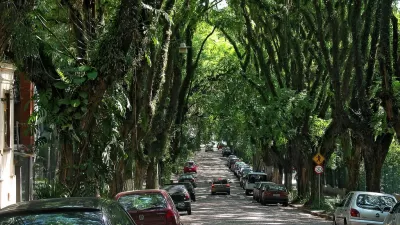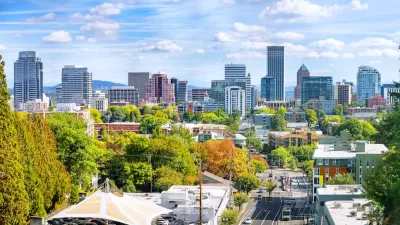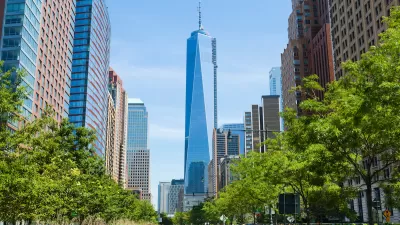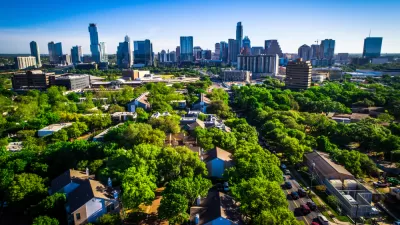Most of the reasons street trees are sometimes unpopular with residents are either untrue or can be mitigated.

There's a surprising amount of resistance to the ideas of street trees planted in sidewalks, according to an article by Catalina Jaramillo:
Trees aren’t generally controversial. They usually look nice, they provide shade and improve the air and water quality. Scientists say they even make people happier.
But when it comes to planting a tree on the street, many Philadelphians say — nuh uh, not in my sidewalk.
The reasoning for this anti-tree vitriol is fairly easily debunked, according to Jaramillo.
The article walks through a series of myths about street trees, providing evidence to the contrary:
- MYTH 1: ‘There’s few trees in lower-income neighborhoods because residents don’t want them’
- MYTH 2: ‘Trees get into pipes’
- MYTH 3: ‘Tree planting and maintenance is prohibitively expensive’
- MYTH 4: ‘Trees destroy sidewalks’
As noted by Jaramillo, sometimes there are risks and liabilities associated with street trees, and sometimes the trees chosen for planting on streets are the wrong trees for the job. But still, trees can and should be far more beneficial than harmful, and it's far more worth the effort of having trees than not to have any trees at all.
FULL STORY: Not in my sidewalk: Debunking Philly tree myths

Planetizen Federal Action Tracker
A weekly monitor of how Trump’s orders and actions are impacting planners and planning in America.

Congressman Proposes Bill to Rename DC Metro “Trump Train”
The Make Autorail Great Again Act would withhold federal funding to the system until the Washington Metropolitan Area Transit Authority (WMATA), rebrands as the Washington Metropolitan Authority for Greater Access (WMAGA).

DARTSpace Platform Streamlines Dallas TOD Application Process
The Dallas transit agency hopes a shorter permitting timeline will boost transit-oriented development around rail stations.

San Francisco's School District Spent $105M To Build Affordable Housing for Teachers — And That's Just the Beginning
SFUSD joins a growing list of school districts using their land holdings to address housing affordability challenges faced by their own employees.

Car-Centric LA Suburb Looks to a Train-Oriented Future
City leaders in Rancho Cucamonga, the future western terminus of the Brightline West rail line to Las Vegas, want to reimagine the city as a transit-oriented, pedestrian-friendly community.

New Alaska Bitcoin Mine Would Burn as Much Energy as the State’s Largest Coal Plant
Fueled by “stranded” natural gas, the startup hopes to become the largest in the US, and to make Alaska an industry center.
Urban Design for Planners 1: Software Tools
This six-course series explores essential urban design concepts using open source software and equips planners with the tools they need to participate fully in the urban design process.
Planning for Universal Design
Learn the tools for implementing Universal Design in planning regulations.
Municipality of Princeton
Roanoke Valley-Alleghany Regional Commission
City of Mt Shasta
City of Camden Redevelopment Agency
City of Astoria
Transportation Research & Education Center (TREC) at Portland State University
US High Speed Rail Association
City of Camden Redevelopment Agency
Municipality of Princeton (NJ)





























